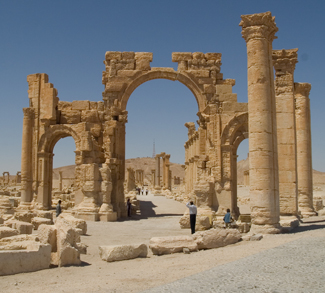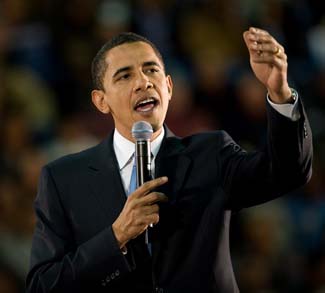In the long run, terrorism will be eradicated, and the proof is Daesh, the wealthiest terrorist organization ever. It has been chased away from Iraq and Syria, where they were occupying 40% of the territory; the group has been weakened. However, and I don’t want to sound pessimistic, but I believe that, in the short run, terrorism will be bloodier and will make use of means we haven’t seen before.
So says Samir Al Ghatas, an Egyptian MP, scholar, and president of the Cairo-based Middle East Forum for Strategic Studies, during his interview at the end of March in Bucharest. Ghatas was invited by the Bucharest-based CCERPA (The Romanian-Pan Arab European Cultural Centre) for an exchange of ideas with various international experts.
Unsurprisingly, one of the hottest topics discussed was terrorism.
Ghatas depicts a comprehensive image of the terrorism phenomenon, starting with its inception and ending on the optimistic note that terrorism will one day disappear:
Terrorism has no unified definition across the world. It is basically defined as violence practiced against civilians. However, there are discrepancies in defining terrorism, especially because some resistance movements are fighting for political goals and cannot be considered to be terrorist, while some countries practice terrorism against civilians but they are not considered to be terrorist either. The cause of terrorism is intricate, we actually see several causes combined in various ratios – economic, social, religious, and psychological reasons. It basically depends on the region.
This sheds some light on why many members and leaders of terrorist organizations are wealthy, such as Bin Laden and al-Zawahiri, and why some citizens of richer countries join terrorist groups. The oft-alleged determiner of low education is not a valid overriding feature either, because a lot of leaders and foreign fighters have higher education and even PhD degrees, which are put to the terrible purpose of disseminating terror using advanced technology and high-level expertise. Religion is also a weak point born of common misinterpretations of Islam and Jihad as an underlying philosophy for recruiting terrorist fighters.
Ghatas elaborates on the fallacy of conflating religion with terrorism:
Jihad is equaled to terrorism, which is a mistake, and Huntington’s concept of clash of civilization is based upon the wrong idea that Islam is terrorism, forgetting that 93% of the victims of terrorism are Arabs and Muslim people.
The psychological element is also highly important. For Ghatas, “most terrorists have family-related troubles or have been involved in criminal activities such as trafficking or in perversions,” a characteristic that would seem confirm the conclusion of Hedayah, the UN-funded International Centre of Excellence in Countering Terrorism, located in Abu Dhabi. Hedayah asserts: “what radicalized people have in common is not religion, but the fact that they are not cherishing life anymore.”
Ghatas’ think tank, the Middle East Forum for Strategic Studies, has secured some 74 books compiled by Daesh, books that reflect the ideology it uses to indoctrinate its terrorist fighters. An analysis of these materials reveals that Daesh ideology is based upon three main ideas: the dream to return to the Caliphate; the demand that legislation be based upon the Quran; and the promotion of force and violence in order to return to the state of Caliphate.
Ghatas continues:
There are foreign forces using terrorist organizations to achieve their goals. Across the Arab world, terrorism is seen as a maneuver of the West, and especially of the U.S. We do not agree with this theory, but we do believe that the big international actors are using terrorist groups in the confrontation among them. The proof is in the fact that the U.S. does not consider al-Nusra to be a terrorist organization, and Russia does not consider Faylaq al-Rahman to terrorist and helped it withdraw from the Damascus suburbs into Northern Syria.
Providing a brief historical overview, Ghatas explains that “terrorism became international after the Soviet invasion in Afghanistan, when the U.S. and the CIA recruited and funded terrorists to fight against the Soviet Union. Daesh has its origins in al-Qaeda, which appeared during this invasion. Daesh emerged after the US invasion in Iraq and the change of forces between Shia and Sunni. Al Zarkawi went to Iraq and used these terror groups to counter Iran’s influence over Iraq.”
In the beginning, Daesh and al-Qaeda had a unified view, but in time they became rivals in their attempt to influence Iraq, the Levant, and the entire Middle East. Daesh has managed to become outstanding in the history of terrorism because it became the richest terrorist group, with bank accounts of approximately 3 billion USD as a result of selling Iraq’s oil. It is the most sophisticated as it has used high technology and the expertise of foreign fighters; it has implemented a local authority; it occupied large territories, for instance, 40% of Syria; and it had its own institutions such as an army and schools. Above all, Abu Bakr Al Baghdadi proclaimed himself the Caliph of all Muslims, “something that not even Ben Laden dared!”, as Ghatas points out.
However, Daesh has been seriously weakened and chased away from its occupied territories by the international coalition. It seems to be spreading across new territories, active on the Mediterranean coast, the Sahara, Southeast Asia, and creating inactive cells in Europe.
Liviu Muresan, president of the Romanian think tank EURISC, provides some correlative views on the propagation of terrorism which complement Ghatas’ take:
Syria has become a test site for the great powers, the local powers, the fighters of the national armies, and the opposition; a test site for the latest weapons and equipment that need validation under real fighting conditions for arms exports, see the case of Russian Federation… We’ve come to differentiate good terrorists and bad terrorists.
Liviu Muresan further explains the current geopolitics in the region, emphasizing that Syria is the key to the Near and Middle East and the “privileged” place to test new strategies for the various countries and non-state actors involved. Two lines of force are noticeable: North-to-South (Russia, Turkey, and Iran) and South-to-North (Gulf states and Israel, backed by United States.)
In addition:
New actors are now in the spaghetti bowl: China and Great Britain. China may be a contributor to a negotiated solution in order to protect its economic interests and investments, mainly in the form of its paramount project the One Belt One Road Initiative. And Great Britain is returning to the region where it drafted the original geopolitical design through the Sykes-Picot Agreement in 1916. After Brexit, it intends to reposition itself on the global stage by not leaving it to the less experienced players in the Near and Middle East – see also the new military base in Bahrain.
Muresan’s perspective mirrors one of the conclusions of Samir Ghatas, that the involvement of global actors, and the shadows of other ones, hurt the prospect of eradicating terrorism since the two seem to have a cause-effect relation. “We would like to see no more of the big global actors using terrorist groups to achieve their purposes,” says Ghatas.
On how to ultimately curtail terrorism, Ghatas maintains:
We can contain terrorism, which has been proven already, but we won’t eradicate terrorism with military means alone. That will take a more comprehensive strategy. Lone-wolf terrorists can act on their own with primitive weapons, and terrorist organizations may gain access to nuclear weapons in the future. So the responsibility falls not just to the army, but to the society as a whole!
The opinions, beliefs, and viewpoints expressed by the authors are theirs alone and don’t reflect any official position of Geopoliticalmonitor.com.




